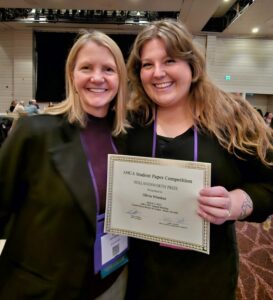CDFA AWARDS $4.1 MILLION FOR CLIMATE-SMART DAIRY AND LIVESTOCK RESEARCH PROJECTS
By Steve Lyle
SACRAMENTO, June 7, 2023, The California Department of Food and Agriculture (CDFA) today announced the award of $4.1 million in grant funding to three research projects as part of the California Livestock Methane Measurement, Mitigation, and Thriving Environments Research Grant Program (CLIM³ATE-RP), funded by Budget Act of 2021 (SB 170, Chapter 240).
The research projects’ goals are threefold:
1. Verify the greenhouse gas and environmental co-benefits of climate-smart practices on California dairies
2. Evaluate alternative methane mitigation strategies, including those that address enteric methane
3. Advance manure recycling and innovative products development.
“This funding will help ensure that California continues to see emissions benefits from ongoing projects and achieve additional reductions from new practices that address enteric methane and turn manure into useful products,” said CDFA Secretary Karen Ross. “We are excited about these proposals from our grantees and look forward to seeing their innovative work.”
To verify the greenhouse gas and environmental co-benefits of climate-smart practices on California dairies, CDFA awarded $1.6 Million dollars to Bubbleology Research International for the project titled, “Evaluating the New, Smart, Climate-Friendly California Dairy: Measuring the Climate and Environmental Air Emissions Footprints of Improved Manure Management Practices.” This project aims to improve CDFA’s ability to assess the benefits and co-benefits of the Department’s greenhouse gas reduction incentive programs through more comprehensive greenhouse gas and air quality data from the dairy industry. The project will assemble this new data using a unique mobile air quality lab, airborne remote sensing, and data mining.
To evaluate enteric methane mitigation strategies, CDFA awarded $500,000 dollars to Mooteric LLC for a project titled, “Feeding Seaweed to Accelerate Enteric Methane Emissions Reductions in Central Valley Dairies.” This project aims to conduct on-farm feeding trials to verify the methane-mitigating benefits of seaweed-based feed additives within the regular feed rations of Central Valley dairy cows.
To advance manure recycling and innovative products development, CDFA awarded $2 Million dollars to FYTO for a project titled, “Aquatic Crop Production as a Nutrient-to-Feed Solution for California Dairies”. This project will demonstrate the installation of a commercial-scale, automated aquatic crop farm in Modesto, CA. When complete, the demonstration project will efficiently recycle manure effluents into valuable agricultural inputs. FYTO, academic, and dairy industry partners will jointly validate the environmental impact, economic feasibility, and product efficacy of aquatic crops grown on different effluent types as a high-protein dairy feed ingredient.
A list of awarded projects and additional information about this program can be found at https://www.cdfa.ca.gov/oefi/research/.

















